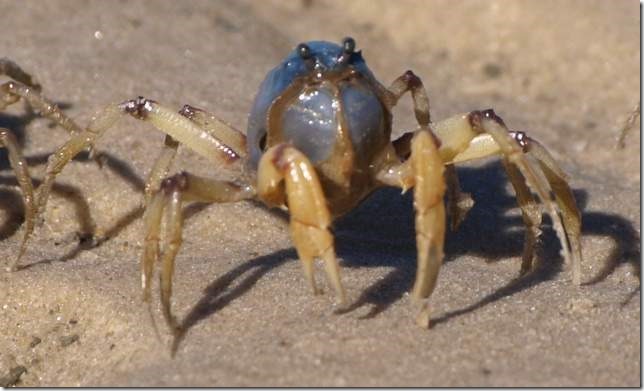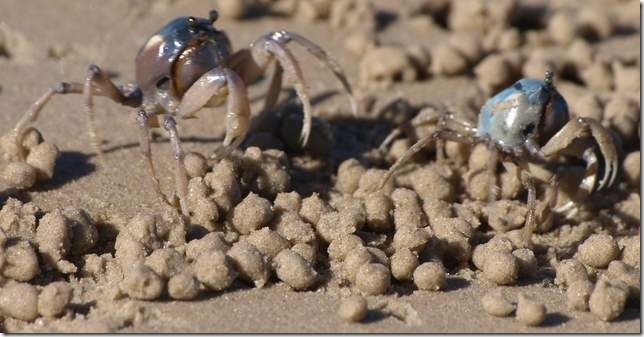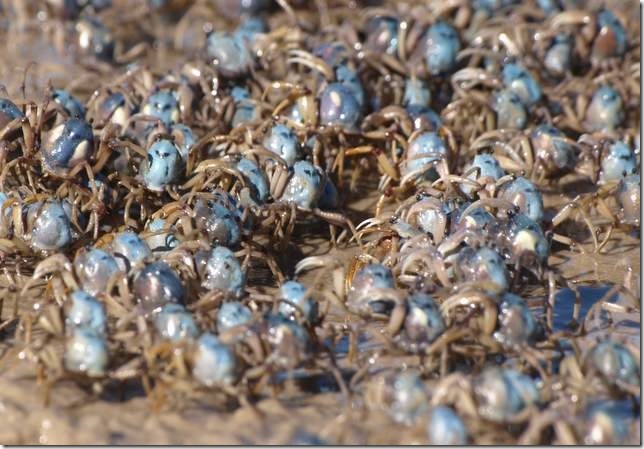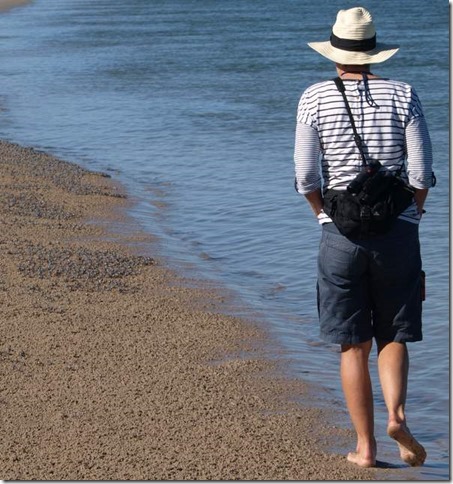Soldier crabs

VulcanSpirit
Richard & Alison Brunstrom
Fri 4 Jul 2014 09:43
|
The now-depleted crew of the Vulcan Spirit had never encountered, nor even
heard of, soldier crabs until they were discovered during a day trip from
Bundaberg to the estuary of the Burrum River. These are amazing animals, living
in vast numbers on and in the intertidal mud. Each crab is about the size of a
child’s marble, with a blue carapace (back), and in close-up looks like
this:
 This is Mictyris longicarpus, endemic to the east coast of
Australia. It lives on algae and detritus that it sifts from the fine-grained
estuarine sand, leaving behind tell-tale balls of processed sand.
 They gain their name from their habit of moving around in seemingly
organised groups of hundreds or thousands of individuals, often with larger
crabs at the front apparently leading the army (it is now thought that they are
at the front simply because their legs are longer!). With crabs’ usual keen
eyesight they can spot movement from several metres away, and the entire army
will wheel about and march off away from the threat. If the threat chases them
or approaches too close the whole lot ‘dig in’, using a unique-amongst-crabs
corkscrew movement to quickly twist themselves beneath the surface of the sand –
the entire army disappears in seconds as if by magic. After a few minutes they
re-emerge, again in unison, and resume their march:
 But crabs cannot see a motionless watcher, and would happily march up to
and over my feet. Extraordinary.
It is possible to herd these crabs by careful movement, like a sheepdog. Go
too fast and they disappear, but walk slowly and they will move just like sheep.
Here is Ali scattering crabs away from the waterline in front of her:
 |